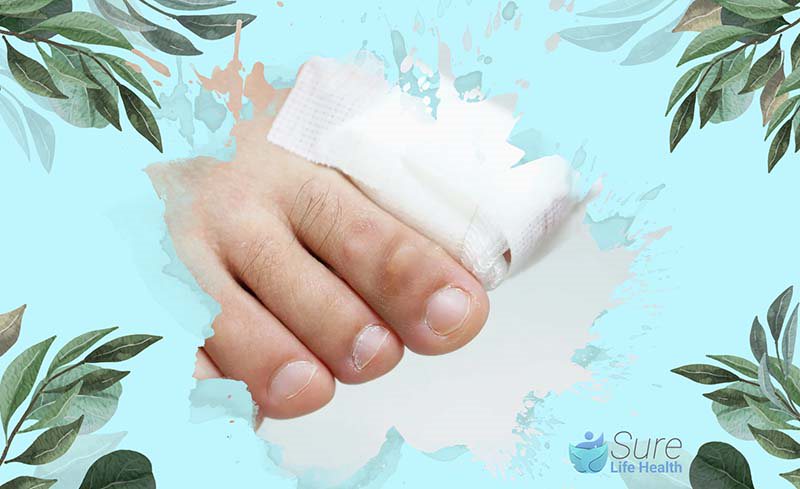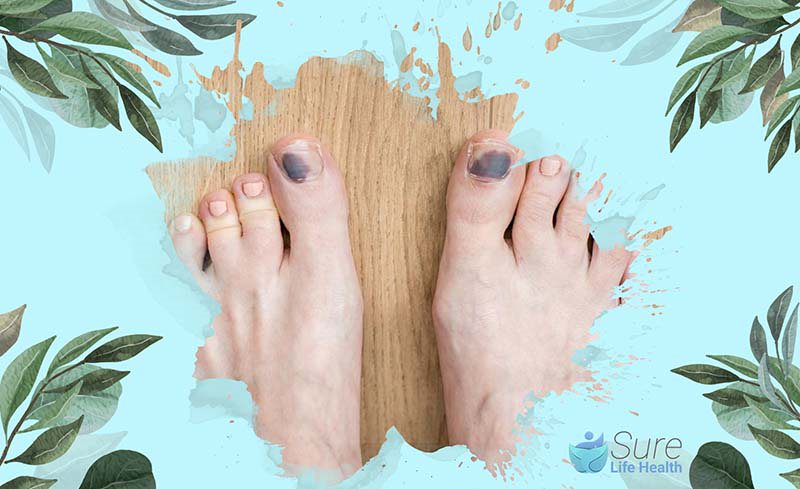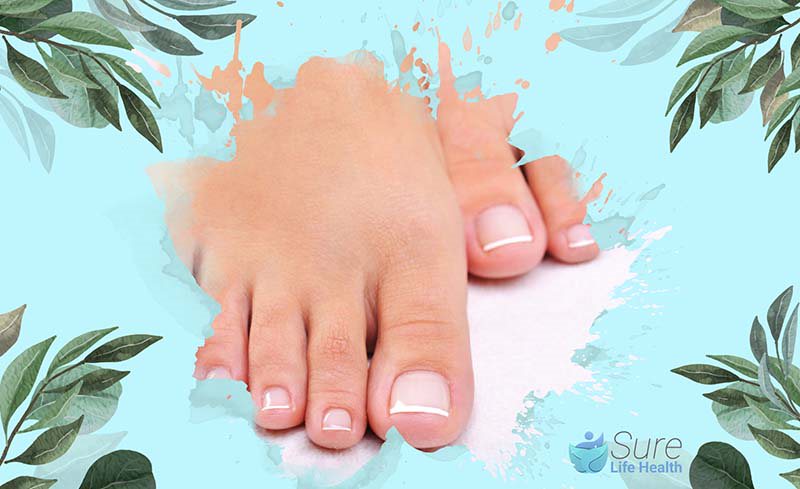Bruising a toenail is a common occurrence, particularly for runners or anyone who might have had an accident like stubbing their toe or dropping an object on their foot.
While it may appear to be a minor issue, a bruised toenail can lead to weeks of discomfort. Here are some strategies on how to heal a bruised toe nail effectively to minimize pain and speed up recovery.
How to Heal a Bruised Toe Nail
First things first: avoid trying any invasive treatments at home. It’s essential to prioritize safety, as Champ advises, to prevent the risk of infection. “Maintain the highest standards of hygiene when dealing with skin or nail damage—whether it’s bleeding or not, infected or not,” he emphasizes. If you’re unsure about the extent of the damage, it’s wise to seek advice from a healthcare professional.
Keeping the toenail clean and dry is crucial. Paul suggests carefully drying bruised toenails after bathing or showering by gently pressing with a towel, followed by a tissue. This helps prevent fungal infections and reduces moisture in the bruised area. According to Paul, moisture trapped in the nail bed can increase the likelihood of the nail thickening (a condition known as onychauxis).
Additionally, Paul recommends protecting the bruised toenail with a sterile dressing while walking. This helps decrease tenderness and minimizes further bruising to the nail plate.

What Causes Your Toenails to Bruise?
Toenail bruising can stem from a variety of factors, according to Simone Paul, a senior podiatrist and CEO of The Footlift London Soho & Liverpool Street Clinic. She explains that a blend of repetitive friction, impact, pressure, and swelling of the toes is often the culprit. “During running, the feet experience significant swelling, which reduces space within the shoe,” she elaborates. “Consequently, the toes continually collide with the shoe’s interior, rub against each other, and exert pressure on the capillaries.” This repetitive action can lead to bruising of the nail bed and plate, resulting in a toenail that appears black due to the accumulation of blood beneath, giving it a dark hue.
Paul also cautions that runners with congenital or acquired lesser toe deformities, such as claw or hammer toe, or conditions like hallux valgus (bunions), are particularly susceptible to developing bruised toenails.

Christophe Champs, an expert in biomechanics and founder of the PODO Clinic and Workshop, adds several other contributing factors. Wearing socks that are too small or tight, or shoes that don’t fit properly, can make toenails more prone to bruising. Additionally, the repetitive motion of toes hitting the front of trainers, especially when running downhill, can exacerbate the issue. Concerning running shoes, both overly spacious and snug options pose unique challenges.
If shoes are too small, there’s limited space for the foot, leading to pressure and repeated friction on the skin and nails, resulting in discomfort. On the other hand, if shoes are too big or have a wide toe box, the twisting motion of the foot can force body weight forward, causing the toes to grip for stability. This can lead to bruising of the toenail and the formation of blisters when the toes are in conflict with the footwear, as Champs explains.
What Do Bruised Toenails Look Like?
Bruised toenails typically have a darker color compared to fungal toenails. While fungal infections often appear yellow to medium brown, bruised toenails tend to have a reddish or purplish hue before turning dark brown, or sometimes even black.
Apart from discoloration, you might suspect a bruised toenail (known as a subungual hematoma) if you’ve recently experienced a noticeable injury to the toe, such as dropping a heavy object on it.
However, specific trauma isn’t always necessary for the condition to occur. Bruised toenails can also result from prolonged overuse or irritation. For instance, individuals who wear overly tight shoes while engaging in physical activities may gradually develop a bruised toenail over time.

How to Prevent Black Toenails
Black toenails are more prevalent among seasoned runners who engage in long or high-intensity runs compared to beginners. However, you must take precautions when increasing your running regimen.
Repetitive trauma is often a primary cause, stemming from the motion of running and worsened by poorly fitting footwear. If the top of your shoe rubs against your nail or your toe repeatedly hits the end of your shoe, it can lead to black toenails.
To mitigate this risk, maintain short toenails by trimming them regularly. Ensure there’s a thumb-width distance between the tip of your longest toe and the end of your shoe, advises Quinton Yeldell, D.P.M., founder of footcare company Southern Hospitality. Additionally, opt for shoes that offer ample width, allowing your forefoot to rest comfortably within the shoe without touching its sides.
Dr. Yeldell also suggests sizing up by half a size in shoes or wearing thinner socks to alleviate pressure and safeguard your toenails.
How Long Will Bruises Under Toenails Last?
The healing duration varies depending on individual factors such as the rate of nail growth and the extent of the damage, as explained by Champs. If the nail detaches, it’s advisable to cover it during activities and allow the area to breathe in a clean environment overnight. “Patience is key; simply keep the area dry and clean at all times,” he advises.
In general, the recovery period can range from weeks to months. According to Paul, bruising on the big toe, which contains more capillaries, may persist for six to eight months, and in some cases, it could take over a year to fully grow out. For the other toes, the healing process may take up to three months.

Do You Need to Adapt Your Running During This Period?
If you’re determined to continue running despite a bruised toenail (though if it’s painful, it’s wise to rest and seek advice), there are some adjustments recommended by Paul. Consider opting for running shoes that are half a size larger if possible and cover the bruised nail with a plaster. Running on softer surfaces like grass or astroturf can also be beneficial. Both Paul and Champs advise shorter runs, as prolonged activity may exacerbate the injury due to swelling.
For those committed to running, Champs suggests the following adaptations:
- Choose Comfortable Socks: Wear socks that aren’t too tight, have no seams in the area of the bruised toenail, and can be pulled forward after putting them on.
- Check Shoe Size: Ensure your running shoes fit properly; avoid the common practice of checking the position of your big toe with your thumb if your second toe is longer.
- Maintain Nail Care: Keep your toenails short, with a square cut, and smooth the corners using a glass file. “Short nails prevent catching on socks or conflicts with shoes. Square nails ensure they’re short enough, and smoothing the corners helps prevent ingrown toenails.”
- Avoid Downhill Running: Lastly, steer clear of running downhill, which can aggravate the condition.
By making these adjustments, you can continue your running routine while minimizing discomfort and reducing the risk of further injury to your bruised toenail.
Conclusion
In conclusion, understanding how to heal a bruised toe nail is essential for maintaining foot health and overall well-being. By implementing the tips and strategies outlined in this blog, you can effectively manage discomfort, promote healing, and prevent future injuries.
Be sure to explore more insightful blogs from Sure Life Health, where we continue to shed light on the latest trends and breakthroughs in health and wellness.
Professor Gaye Cunnane, PhD, MB, FRCPI
As the Director of Health and Wellbeing at RCPI, Professor Gaye Cunnane is at the helm of initiatives aimed at enhancing the health and well-being of RCPI Trainers and Trainees. Her role extends beyond administration; she is also a respected clinical professor of rheumatology and a consultant rheumatologist at Trinity College Dublin (TCD) and St James’s Hospital. Prof. Cunnane’s medical journey began at TCD, where she graduated from medical school, and her path has been marked by both clinical and academic excellence.
After completing her basic clinical training in medicine, she embarked on PhD studies at University College Dublin and St Vincent’s University Hospital. Her research during this period was focused on prognostic markers in early inflammatory arthritis, a project that saw her collaborating with esteemed universities across Europe, including in Switzerland, The Netherlands, the UK, and Sweden.
Prof. Cunnane’s career took her to the University of California, San Francisco, where she spent three years delving into research on new treatments for lupus. Her academic prowess led her to the University of Leeds in 2001 as a senior lecturer, before returning to Ireland in 2003 to assume her current roles. She has also served as the National Specialty Director for Rheumatology training in Ireland, Programme Director for Basic Specialist Training with RCPI, and as a past President of the Irish Society for Rheumatology.
PUBLISHED ARTICLES
“Rheumatic disease differentiation using immunoglobulin G sugar printing by high-density electrophoresis”: Published in The Journal of Rheumatology, this study reflects her in-depth investigation into rheumatic diseases.
“Benefits of exercise in patients with rheumatoid arthritis: a randomized controlled trial”: This research work, highlighting the positive impact of exercise on rheumatoid arthritis, underscores Prof. Cunnane’s dedication to practical, patient-centered research.
Additionally, Prof. Cunnane has made notable contributions to the Annals of the Rheumatic Diseases, discussing early referral, diagnosis, and treatment of rheumatoid arthritis. She has also been involved in a study on the NCBI platform investigating exercise benefits in rheumatoid arthritis patients.
Professor Gaye Cunnane’s career is a testament to her commitment to improving patient outcomes in rheumatology through rigorous research, clinical excellence, and dedicated teaching. Her work continues to influence the field of rheumatology, both in Ireland and internationally.

